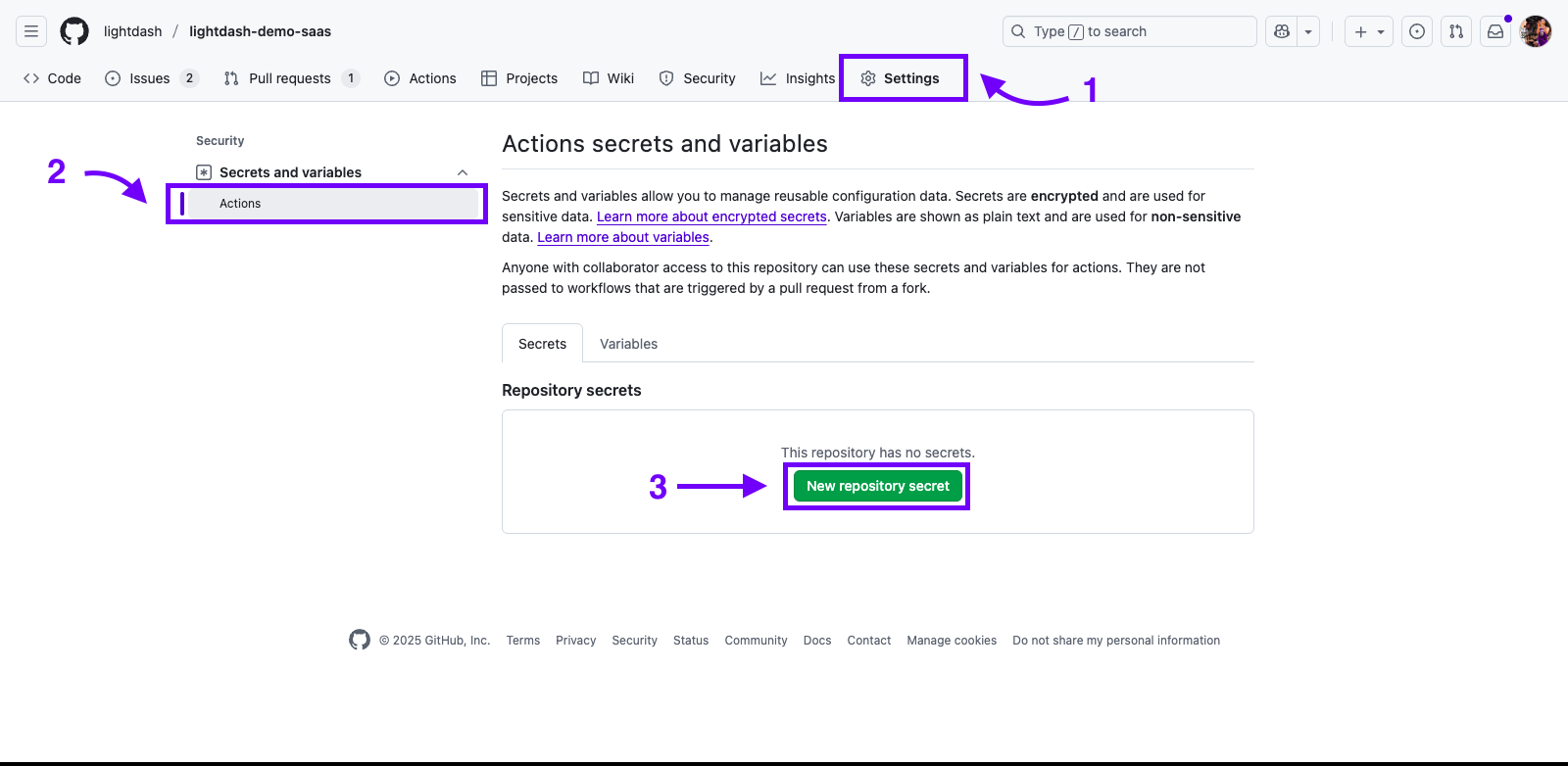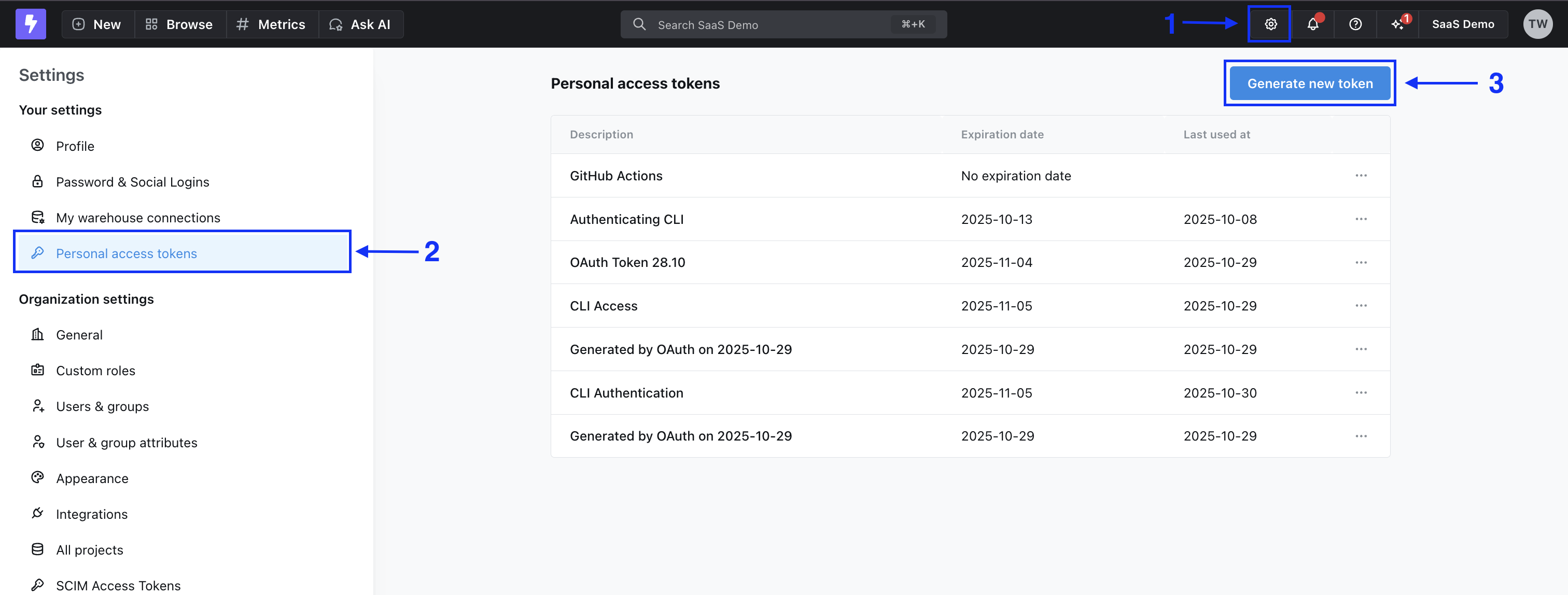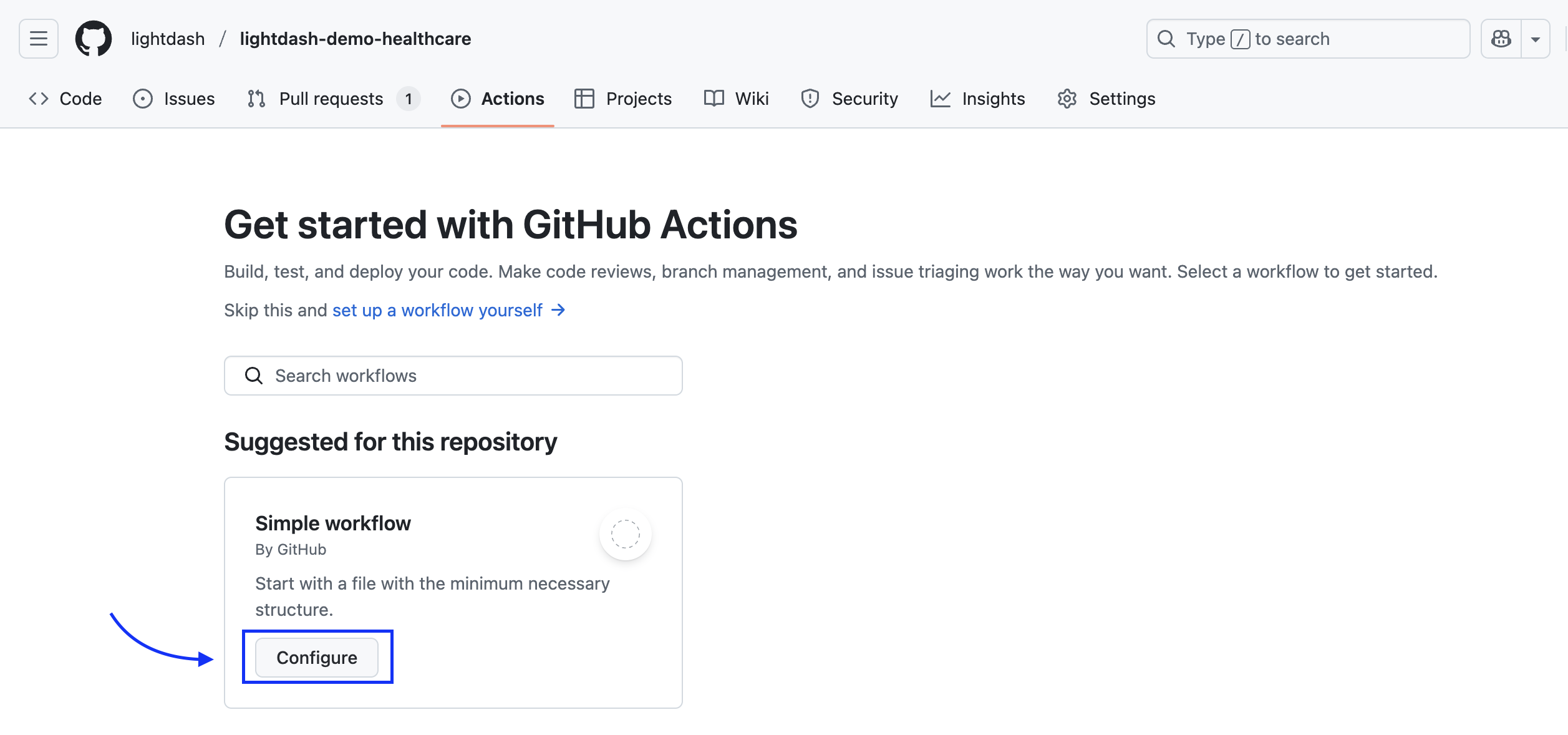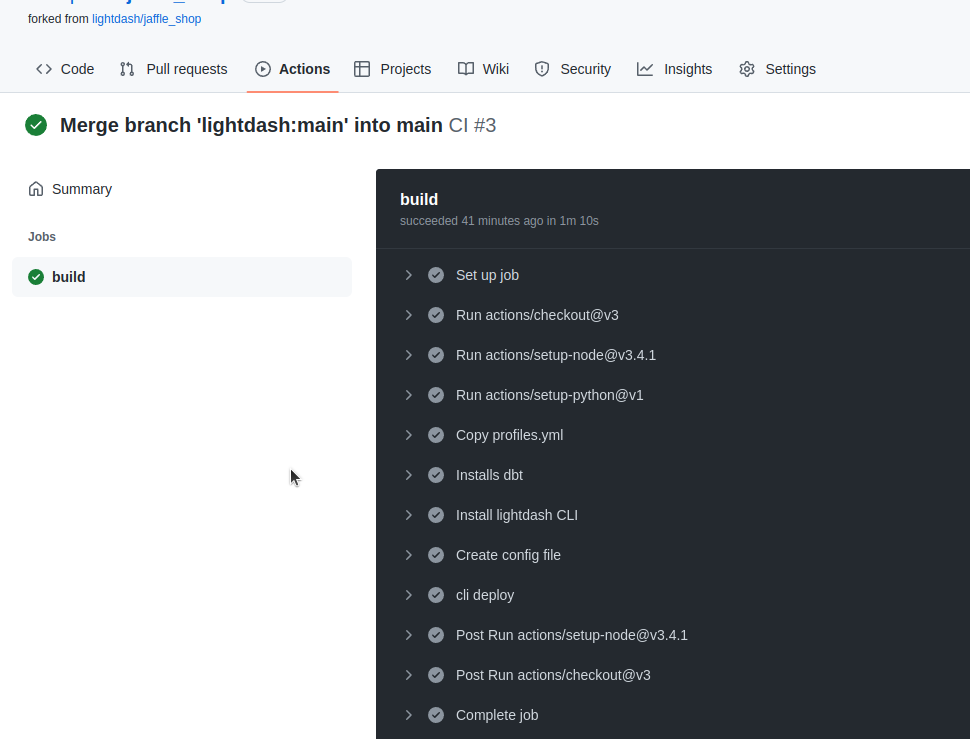Step 1: add the credentials to Github secrets
We are going to add some secrets and config to GitHub actions, but you don’t want those to be public, so the best way to do this is to add them as secrets on Github.If you already have a GitHub action for Lightdash, then you can use the same Lightdash secrets you created for your other action.
Settings , on the left sidebar, click on Secrets under Security. Now click on the New repository secret

LIGHTDASH_API_KEY
Create a new personal access token, by going to Settings > Personal Access Tokens. This is the token you’ll put in for LIGHTDASH_API_KEY.

LIGHTDASH_PROJECT
The UUID for your project. For example, if your URL looks like https://eu1.lightdash.cloud/projects/3538ab33-dc90-aabb-bc00-e50bba3a5f69/tables, then 3538ab33-dc90-45f0-aabb-e50bba3a5f69 is your LIGHTDASH_PROJECT
LIGHTDASH_URL
This is either https://eu1.lightdash.cloud or https://app.lightdash.cloud for Lightdash Cloud users (check the URL to your Lightdash project). If you self-host, this should be your own custom domain.
DBT_PROFILES
Some tips for this bit:
- You might be able to copy a bunch of the information from your local
profiles.ymlfile. You can see what’s in there by typingcat ~/.dbt/profiles.ymlin your terminal. - If you have a separate
prodanddevprofile, you probably want to use the information from yourprodprofile for your GitHub action. - If you want to have different connection settings depending on the user that opened the pull request (dev profiles), then check out this guide.
DBT_PROFILES secret.
BigQuery
BigQuery
BigQuery OAuth:Step 1: create a secret called Step 2: create another secret called More info in dbt’s profiles docs: https://docs.getdbt.com/reference/warehouse-profiles/bigquery-profile#service-account-file
GOOGLE_APPLICATION_CREDENTIALSAdd the service account credentials (the JSON file) that you want to use for your GitHub action. It should look something like this:DBT_PROFILESCopy-paste this template into the secret and fill out the details.This will always use this project connection in your GitHub actions. If you want your preview projects to have different connection settings depending on the user that opened the pull request (dev profiles), then see what you need to add to your secret in this guide.Postgres
Postgres
Postgres profile configuration:More info in dbt’s profiles docs: https://docs.getdbt.com/reference/warehouse-profiles/postgres-profile#profile-configurationThis will always use this project connection in your GitHub actions. If you want your preview projects to have different connection settings depending on the user that opened the pull request (dev profiles), then see what you need to add to your secret in this guide.
Redshift
Redshift
Redshift password-based authentication:More info in dbt’s profiles docs: https://docs.getdbt.com/reference/warehouse-profiles/redshift-profile#password-based-authenticationThis will always use this project connection in your GitHub actions. If you want your preview projects to have different connection settings depending on the user that opened the pull request (dev profiles), then see what you need to add to your secret in this guide.
Snowflake
Snowflake
User / Password authentication:More info in dbt’s profiles docs: https://docs.getdbt.com/reference/warehouse-profiles/snowflake-profile#user—password-authenticationThis will always use this project connection in your GitHub actions. If you want your preview projects to have different connection settings depending on the user that opened the pull request (dev profiles), then see what you need to add to your secret in this guide.
DataBricks
DataBricks
Set up a DataBricks target:More info in dbt’s profiles docs: https://docs.getdbt.com/reference/warehouse-profiles/bigquery-profile#service-account-jsonThis will always use this project connection in your GitHub actions. If you want your preview projects to have different connection settings depending on the user that opened the pull request (dev profiles), then see what you need to add to your secret in this guide.
Step 2: Create deploy.yml workflow in Github
Go to your repo, click onActions menu.
If you don’t have any GitHub actions, you’ll just need to click on Configure

New workflow, then select setup a workflow yourself.

If you only use a subset of your dbt models in Lightdash, then you’ll want to specify that subset in your file here.For example, to only compile models with the tag
lightdash, you would change this line to: run: lightdash compile --select tag:lightdash --project-dir "$PROJECT_DIR" --profiles-dir . --profile prod || lightdash compile --select tag:lightdash --project-dir "$PROJECT_DIR" --profiles-dir .compile-lightdash.yml
And commit this to your repo by clicking on Start commit.
You’re done!
Everytime you open a new pull request on the repository that contains your Lightdash project,lightdash compile will run and check to see if any of the changes you made will break your Lightdash instance.
You can see the log on the Github actions page
